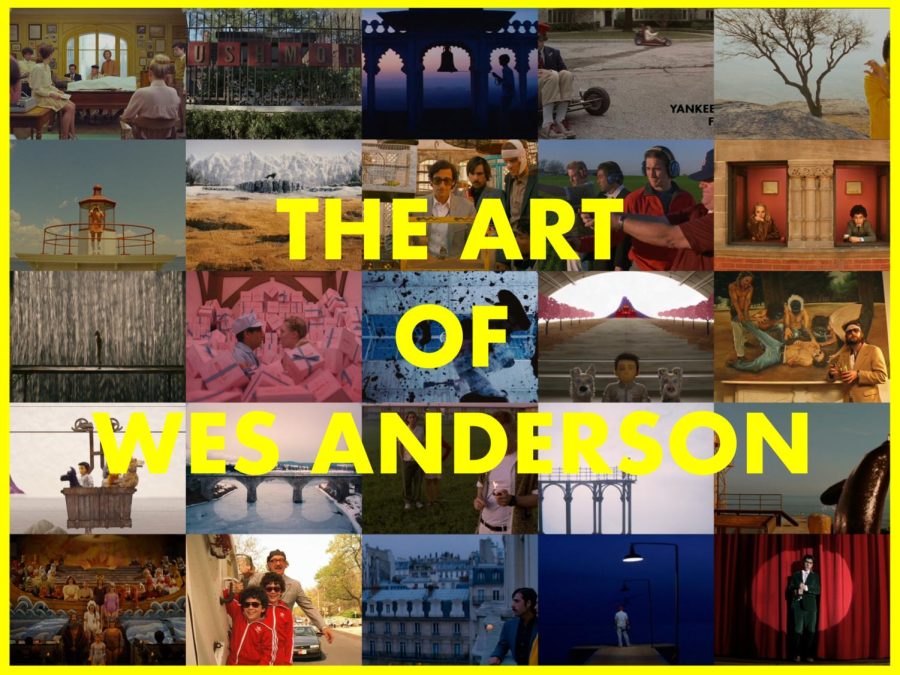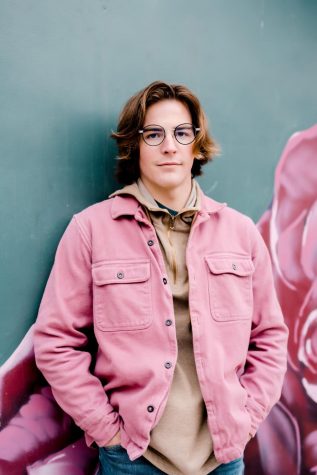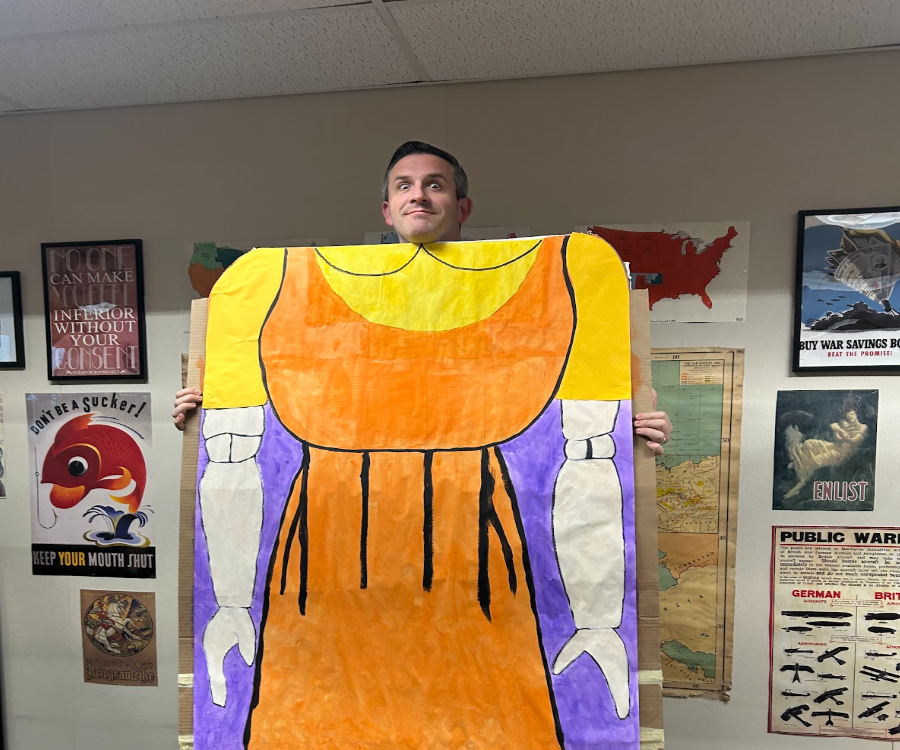The Art of Wes Anderson
A dive into analyzing the unique style and themes of the acclaimed director’s filmography.
May 9, 2023
Wes Anderson is a filmmaker who has captured the hearts of audiences with his distinctive and visually extraordinary films. Known for his quirky characters, whimsical sets, and meticulous attention to detail, Anderson has created a world that is entirely his own. In this article, we will take a closer look at the art of Wes Anderson, analyzing the unique style and recurring themes that have made him a distinctive figure in contemporary cinema. Anderson’s films are marked by a visual and aesthetic language that is instantly recognizable, with stylized sets, symmetrical compositions, and a vibrant color palette.
We will examine the ways in which Anderson’s distinct visual language serves to reinforce the themes and ideas explored in his films, as well as the influence of art, literature, and cinema on his work. Additionally, we will explore the recurring themes that underpin Anderson’s filmography, including the complexities of family relationships, the search for identity, the fleeting nature of love, and the melancholy of memory. By analyzing Anderson’s films in this way, we hope to gain a deeper understanding of the artistry and emotional resonance of his work, delving into his unique style and the recurring themes that have made him one of the most celebrated directors of our time.
Wes Anderson grew up in Houston, Texas, and attended the University of Texas in Austin. At university, he met his future roommate and collaborator Owen Wilson and acquired a Bachelor of Arts degree in philosophy. Anderson began his filmmaking career with the short film “Bottle Rocket” in 1994. The film starred Owen and Luke Wilson, who would appear in several of Anderson’s later films. He expanded the short into a feature film in 1996, which was also titled “Bottle Rocket.” Though it was well reviewed, it performed terribly at the box office. In 1998, Anderson released his second film, “Rushmore,” which starred Jason Schwartzman and Bill Murray. The film helped establish Anderson’s unique style and voice as a filmmaker and has since gained cult status. Anderson’s next film, “The Royal Tenenbaums” (2001), is a comedy drama about a dysfunctional family of child prodigies. The film starred Gene Hackman, Anjelica Huston, and Ben Stiller, among others, and received critical acclaim and several award nominations.
Anderson continued to experiment with his style and storytelling in his subsequent films, including “The Life Aquatic with Steve Zissou” (2004), “The Darjeeling Limited” (2007), and “Fantastic Mr. Fox” (2009), which was his first animated film. Anderson’s 2012 film, “Moonrise Kingdom,” was a coming-of-age story set in the 1960s and starred Jared Gilman and Kara Hayward. The film was a critical and commercial success and earned Anderson and Roman Coppola an Academy Award nomination for Best Original Screenplay. Anderson’s next film, “The Grand Budapest Hotel” (2014), was a comedy-drama set in a fictional European country between the World Wars. The film starred Ralph Fiennes, Tony Revolori, and Saoirse Ronan, among others, and received critical acclaim and several award nominations, including nine Academy Award nominations, of which it won four.
In 2018, Anderson released “Isle of Dogs,” an animated film set in a dystopian future where dogs have been banished to an island of trash. The film featured the voices of Bryan Cranston, Edward Norton, and Bill Murray, among others, and received positive reviews. Anderson’s most recent film is “The French Dispatch” (2021), an anthology comedy-drama set in the fictional French city of Ennui-sur-Blasé. The film features an ensemble cast that includes Benicio del Toro, Frances McDormand, and Bill Murray, among others, and received positive reviews.
Wes Anderson is a director noted for his distinct visual style, which incorporates symmetry, vibrant colors, and whimsical production design. Anderson’s films are instantly recognizable since he has built a unique vision that is both lighthearted and melancholic. His films frequently combine comedy and drama, with unusual characters. Anderson’s use of symmetrical framing is one of the most recognizable aspects of his visual style. His shots are frequently composed with considerable precision, employing a centered camera to achieve a balanced and harmonious composition. The attention to symmetry also lends to the tableau effect, which makes shots appear virtually two-dimensional like a series of paintings.
From the symmetry of the family residence in “The Royal Tenenbaums” to the meticulously arranged views of the hotel in “The Grand Budapest Hotel,” this technique can be observed in all his films. The application of symmetry provides a sense of order and control, which contrasts with the characters’ erratic and chaotic personalities. Another important aspect of Anderson’s design is the use of vibrant colors. From the yellow hues of “Moonrise Kingdom” to the bold reds and pinks of “The Grand Budapest Hotel,” these films are overflowing with color. His color pallet is widely employed to evoke nostalgia and establish a dreamy ambience. In “The Life Aquatic with Steve Zissou,” for example, the use of bright primary colors underlines the film’s exotic setting. The crew members are dressed in blue uniforms sporting red beanies. Throughout Anderson’s works, red is often associated with grief and emotional trauma. Chas in “The Royal Tenenbaums” wears a red Adidas tracksuit after his father abandons him and he loses his wife. In “The Life Aquatic,” Steve Zissou is depressed about the loss of a friend and the demise of his career.
In “The Darjeeling Limited,” black and white shades are prevalent in the event of someone’s death, such as the young boy or the three brothers’ father. Anderson’s films are also distinguished by their unique production design. He frequently employs miniatures and hand-crafted settings to create a whimsical and nostalgic fantasy world. For example, in The Grand Budapest Hotel, the hotel was constructed as a miniature, with every element meticulously crafted to create an immersive world. The costume design, props, and other paraphernalia employed in each scene also work to establish a unique film world and enhance characterization. For example, Margot Tenenbaum’s fur coat in “The Royal Tenenbaums” mirrors her aloof and cold demeanor while simultaneously acting as a thick, warm layer of insulation from the world. Her diverse tennis dresses, on the other hand, attach her to her former tennis prodigy brother and give her a juvenile appeal.
Each film’s production design is typically a mix of vintage and contemporary aesthetics, creating a sense of timelessness that is both familiar and unusual. Music is also a meaningful part of Anderson’s aesthetic approach. His films often include a carefully curated score that complements the tone and themes. He commonly uses 1960s and 1970s pop tunes, classical music and original compositions. The music he selects is usually applied to provoke nostalgia and an emotional reaction from the audience.
Wes Anderson’s distinct visual style has generated intense appreciation and criticism over the years. It is important to realize, however, that Anderson’s distinct style of filmmaking did not emerge from out of nowhere. He, like any other artist, was influenced by the work of others who came before him. In truth, Anderson has stated that various filmmakers and films have had a measurable influence on his work. Anderson was heavily influenced by the French New Wave movement of the 1960s, noticeably the films of François Truffaut and Jean-Luc Godard. Anderson has stated how their use of unorthodox camera angles, jump cuts, and a playful spirit inspired his own storytelling and visual style. Anderson has also cited directors such as Mike Nichols and Roman Polanski as main inspirations.
Wes Anderson’s 1998 film “Rushmore” tells the coming-of-age story of Max Fischer, a precocious and ambitious student at an elite prep school who struggles to navigate his way through life. “Rushmore” has been commended for its unique blend of humor, pathos, and quirky charm because of its profound premise, rich characters, and visual style. The film was also lauded for its parallels to two other iconic works of literature and film: “The Catcher in the Rye” and “The Graduate.” One of the key themes that “Rushmore” shares with “The Catcher in the Rye” is the struggle of young people to find their place in the world. Both works depict protagonists who are disillusioned with the expectations and conventions of society and who are searching for a sense of authenticity and purpose in their lives. Max Fischer, like Holden Caulfield, is a complicated and flawed character who struggles to find his own identity and his place in the world. Max’s preoccupation with extracurricular activities, as well as his tendency to inflate his accomplishments, reveal a fundamental insecurity and fear of failure mirrored by Holden’s character. Along with thematic similarities to “The Catcher in the Rye,” “Rushmore” shares several stylistic and narrative characteristics with the film “The Graduate.” Both films feature protagonists who are adrift in a world of privilege and wealth, who are also searching for a purpose and direction in their lives. One of the main ways in which “Rushmore” pays homage to “The Graduate” is through its use of a love triangle as a central plot device. The relationship between Max, his love interest Miss Cross, and the wealthy industrialist Herman Blume mirrors the dynamic between Benjamin Braddock, Elaine Robinson, and her mother in “The Graduate.” Like Benjamin, Max is caught between his love for an older woman and his desire to impress a wealthy and powerful man. Also, there are clear examples of their similarities including shots of Max and Miss Cross peering into the fish tank and the scene of Blume underwater in the pool. Furthermore, “Rushmore” and “The Graduate” both use humor to explore deeper themes of loneliness, isolation, and existential dread. The film’s deadpan humor and quirky characters serve as a counterpoint to the underlying sadness and melancholy that pervades the story. “The Royal Tenenbaums,” another Anderson film influenced by J.D. Salinger’s writings, was inspired in part by Salinger’s Glass family stories, namely Franny and Zooey. The Glass family in the novel consists of seven siblings, all of whom are extremely intelligent but suffer from emotional and psychological turmoil. Similarly, the Tenenbaum family in Anderson’s film is made up of three gifted children who suffer with various personal issues. Both works deal with families who are struggling to come to terms with their dysfunctionality. Additionally, the film was influenced by films such as Orson Welles’ 1942 film “The Magnificent Ambersons” and Louis Malle’s “The Fire Within,” from which the line “I’m going to kill myself tomorrow” originated.




